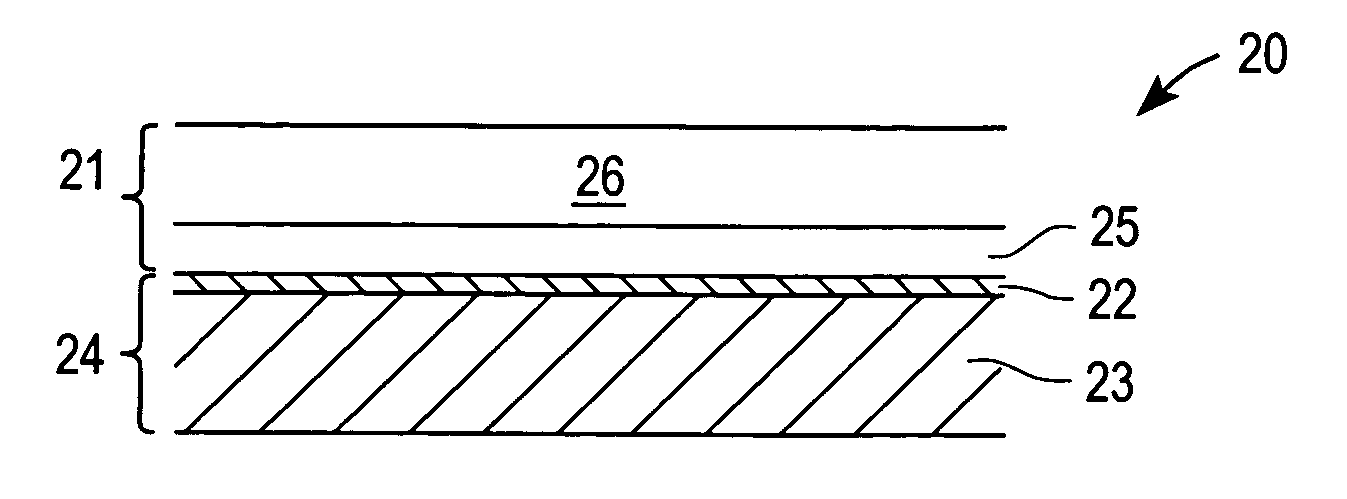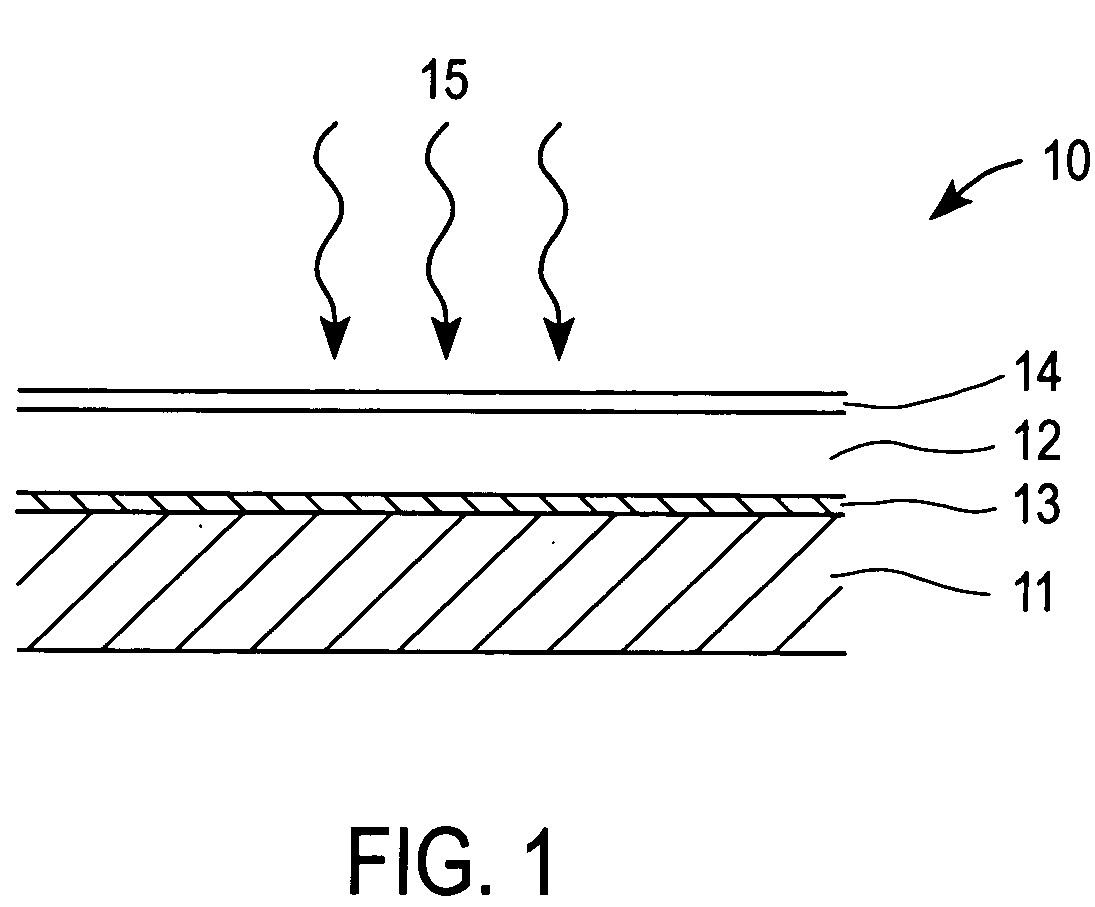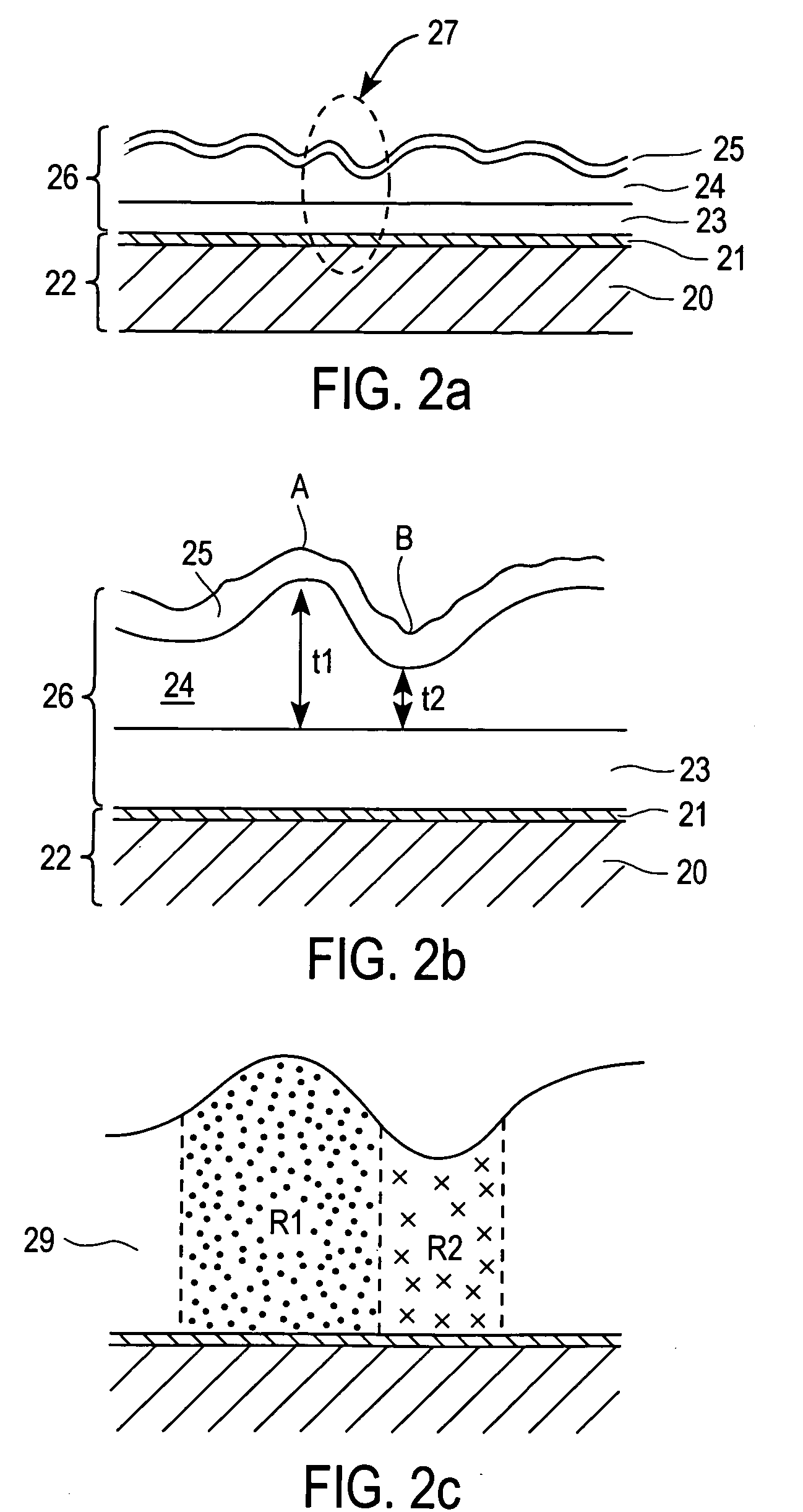Technique and apparatus for depositing thin layers of semiconductors for solar cell fabrication
a technology of solar cells and semiconductors, applied in the direction of electrical equipment, basic electric elements, semiconductor devices, etc., can solve the problems of high equipment cost, low material utilization, and high cost of silicon-based solar cells, so as to achieve the compositional uniformity of the stack at the microscale and reduce the rough surface
- Summary
- Abstract
- Description
- Claims
- Application Information
AI Technical Summary
Benefits of technology
Problems solved by technology
Method used
Image
Examples
example 5
[0058] The process of Example 4 may be varied in a way that even more Cu (alternately less In) may be deposited in steps a) and b) so that the Cu / In ratio is more than 1.22 but is within the region A of FIG. 4. In this case after step c) the alloyed layer comprises Cu11In9 solid phase as well as other solid phases shown in FIG. 4, with In content of 37% or less, to the left of region A. In this case more In needs to be deposited in step d) to compensate for the higher Cu / In ratio of the alloyed layer. Rest of the steps would be similar to those described in Example 4. It should be noted that the Cu / In ratio in the alloyed layer may be made even higher by selecting the thicknesses of the Cu and In layers corresponding to less than about 37% In (to the left of region A). In this case a much higher temperature range (up to about 600° C.) may be used during the treating step c) without forming a liquid phase to cause de-wetting and balling.
example 6
[0059] A CuInSe2 layer may be formed on a Mo coated glass base by carrying out the following steps; a) deposit 100 nm of Cu on the base, b) deposit 180 nm of In so that Cu / In molar ratio is 1.22, c) treat the stack at a temperature range of 156-310° C., preferably for a period of 2-300 seconds, to form an alloyed layer comprising substantially the Cu11In9 solid phase, d) repeat steps a), b) and c), and then e) deposit 80 nm of In and, f) selenize thus obtained metallic precursor as described before. It should be noted that after the last In deposition step a low temperature anneal step, such as at 100-200° C. for about 2-300 seconds, may also be carried out before the selenization step to enhance intermixing between the alloyed layer and the last In layer.
example 7
[0060] A CuInSe2 layer may be formed on a Mo coated glass base by carrying out the steps of Example 6 except that the thicknesses of the Cu and In films are adjusted in steps a), b) and d) to yield Cu / In molar ratios of more than 1.22 and the thickness of the In layer in step e) is adjusted to yield an overall Cu / In ratio of 1. In this case higher temperatures of up to about 600° C. may be used in the treatment step c) for even shorter time periods of 2-10 seconds, especially if the overall In content in alloyed layers is less than about 37%.
[0061] Example 8: A CuGaSe2 layer may be formed on a Mo coated glass base by carrying out the following steps; a) deposit 200 nm of Cu on the base, b) deposit 264 nm of Ga so that Cu / Ga molar ratio is about 1.5, c) treat the stack at a temperature range of 30-600° C., preferably for a period of 5-600 seconds, to form an alloyed layer comprising substantially the Cu-rich solid phases with compositions to the left of region B in FIG. 5, d) deposi...
PUM
 Login to View More
Login to View More Abstract
Description
Claims
Application Information
 Login to View More
Login to View More - R&D
- Intellectual Property
- Life Sciences
- Materials
- Tech Scout
- Unparalleled Data Quality
- Higher Quality Content
- 60% Fewer Hallucinations
Browse by: Latest US Patents, China's latest patents, Technical Efficacy Thesaurus, Application Domain, Technology Topic, Popular Technical Reports.
© 2025 PatSnap. All rights reserved.Legal|Privacy policy|Modern Slavery Act Transparency Statement|Sitemap|About US| Contact US: help@patsnap.com



